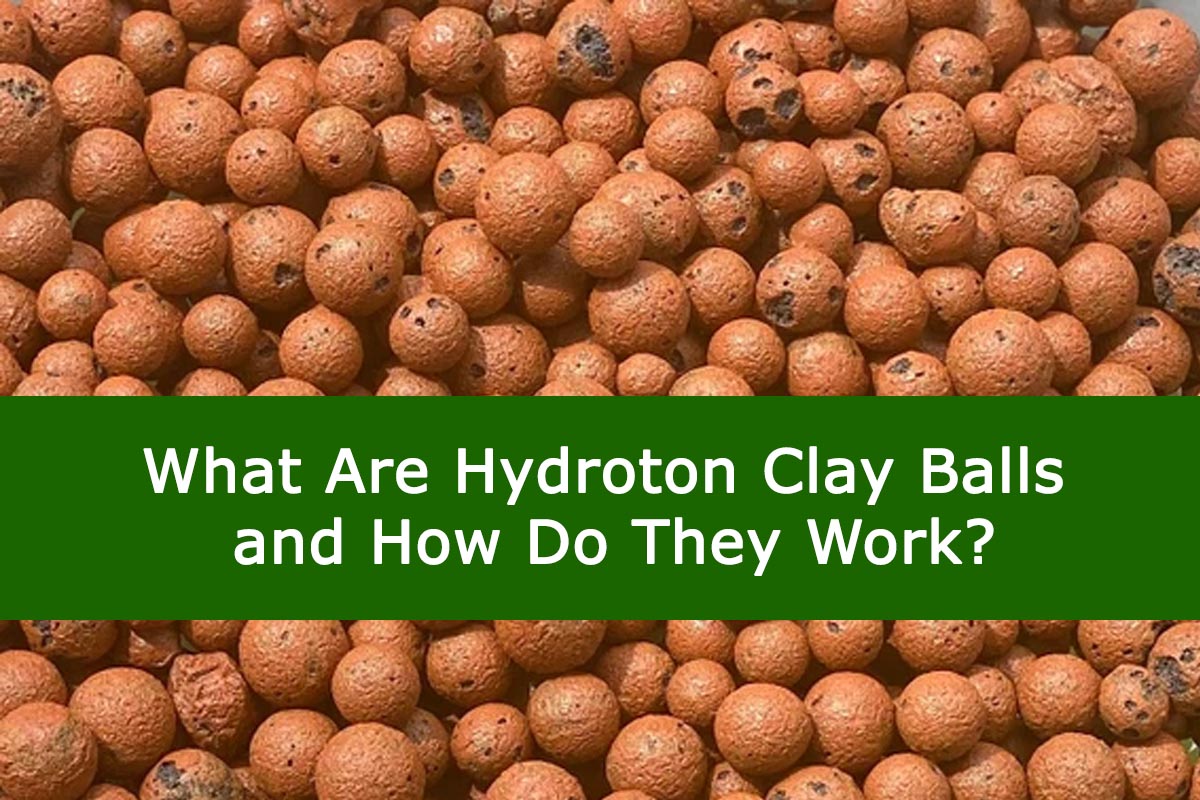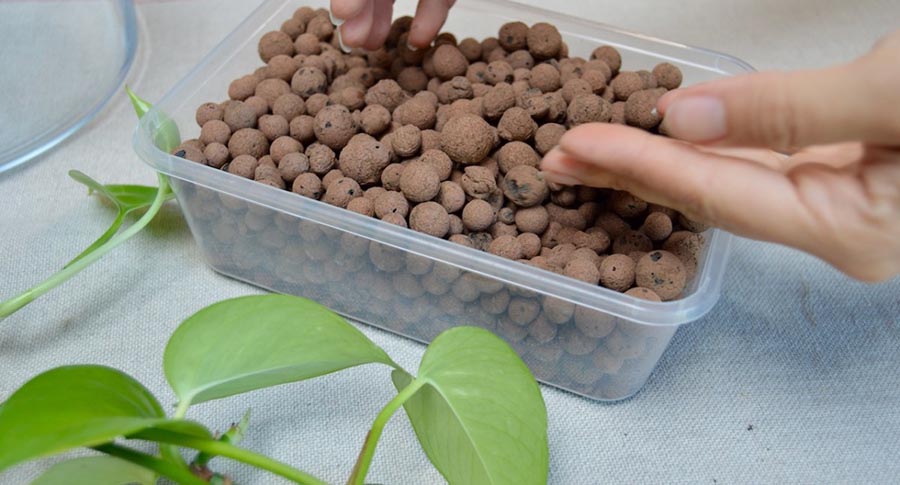
What Are Hydroton Clay Balls and How Do They Work?
In the world of gardening and plant care, innovation always remains. New solutions, from advanced irrigation systems to modern fertilisers, are constantly emerging to make plant cultivation more efficient and successful. One such innovation that has gained traction in recent years is Hydroton clay balls. These small, versatile spheres make waves in professional horticulture and home gardening. But what exactly are Hydroton clay balls, and how do they work their magic? Let’s dive in and explore the world of Hydroton clay balls.
Also Read This : Top 10 Vegetables for Weight Loss: Add Them to Your Diet Now!
What are Hydroton clay balls?
Hydroton clay balls, also known as expanded clay pellets, hydroton, or LECA (Lightweight Expanded Clay Aggregate), are small, lightweight, and porous balls made from clay. They are typically brown or reddish and are characterised by their exceptional water retention and drainage properties. Hydroton clay balls are widely used in hydroponic systems, container gardening, and as a growing medium in various applications.

Also Read This : The Significance and Spiritual Symbolism of the Bodhi Tree
How Do Hydroton Clay Balls Work?
The science behind Hydroton clay balls lies in their unique structure and properties. Here’s a closer look at how they work:
Water Retention and Aeration
Hydroton clay balls have a porous structure that allows them to retain water efficiently. When soaked in water, the clay balls absorb moisture, creating a reservoir that plants can draw from. However, they also have excellent aeration properties. The air pockets within the clay balls ensure that the roots receive adequate oxygen, preventing waterlogging and root rot, which can be common issues in traditional soil-based gardening.
Capillary Action
The capillary action of Hydroton clay balls helps distribute water and nutrients evenly throughout the growing medium. As the roots of the plants reach out into the clay ball-filled space, they can access water and nutrients through the capillary channels, promoting healthy growth.
Also Read This : 30 Stunning Black Flowers and Plants to Beautify Your Garden
pH Neutral
Hydroton clay balls are pH neutral, which means they don’t significantly affect the pH of the growing environment. This allows for greater control over the pH levels of the nutrient solution or soil mix.
Stability and Support
Hydroton clay balls’ stability and support to plants’ root systems are noteworthy. They anchor the plants securely and provide a consistent base for root growth, preventing them from becoming tangled or overcrowded.
Also Read This : Elevate Your Garden with These Beautiful White Flowers
Reusable and Sustainable
Hydroton clay balls are reusable, making them an environmentally friendly option. After a growing cycle, they can be cleaned and sterilised for use in subsequent plantings. This reusability reduces waste and the need for frequent replacement.
Applications of Hydroton Clay Balls:
Hydroponic Systems
Hydroton clay balls are a staple in hydroponic systems, where plants are grown in nutrient-rich water without soil. The balls support the plants and allow their roots to access water, nutrients, and oxygen effectively.
Container Gardening
When used as a part of a soil mix in pots and containers, Hydroton clay balls improve drainage, prevent compaction, and enhance aeration.
Also Read This : 20 Creative Ways to Repurpose Everyday Household Items for Your Garden
Aquaponics
Hydroton clay balls are employed in aquaponic systems, serving as a medium for plant growth while aiding in filtering water in fish tanks.
Seed Starting
Hydroton clay balls can start seeds by creating a favourable environment for germination and early growth.
Tips for Hydroton Clay Balls Usage
To help you make the most of Hydroton clay balls, we’ve compiled a list of essential tips for their successful use. Whether you’re a beginner or a seasoned gardener, these tips will guide you toward harnessing the full potential of Hydroton clay balls in your gardening endeavours.

Pre-Soaking Is Key
Before incorporating Hydroton clay balls into your planting medium, it’s crucial to pre-soak them. Fill a container with water and let the clay balls soak for a few hours or overnight. This process ensures the balls are fully saturated, promoting better water distribution and preventing them from drawing moisture away from your plants’ roots.
Also Read This : How to Choose the Freshest Vegetables at the Market
Create a Balanced Mix
Hydroton clay balls work best when used in conjunction with other growing mediums. Create a balanced mix by combining Hydroton clay balls with potting soil, coco coir, or other suitable mediums. This blend offers the advantages of improved drainage, aeration, and water retention, providing an ideal environment for your plant’s roots to thrive.
Use in Hydroponic Systems
Hydroton clay balls are a staple in hydroponic systems, where plants are grown without soil using nutrient-rich water. These balls support the plants’ root systems, allowing for efficient nutrient and water absorption. When setting up a hydroponic system, ensure that the Hydroton clay balls are placed in a way that will enable the roots to make contact with them.
Also Read This : 17 Creative Vegetable Side Dishes for Every Meal
Monitor Moisture Levels
While Hydroton clay balls are excellent at retaining water, it’s crucial to monitor moisture levels regularly. Over-watering can lead to root rot, so let the top layer of the growing medium dry out slightly before watering again. Use your finger to gauge the moisture level and adjust your watering routine accordingly.
Consider Mixing Nutrients
Consider mixing your nutrient solution with the water if you’re using Hydroton clay balls in a hydroponic system. The porous nature of the balls allows them to absorb and release nutrients, providing a consistent source of nourishment to your plants.
Also Read This : How to Identify and Treat Common Succulent Plant Problems
Choose the Right Container
Opt for containers with drainage holes when using Hydroton clay balls in container gardening. This ensures that excess water can escape, preventing waterlogging and root issues. The Hydroton clay balls will enhance the drainage and aeration properties of the container.
Reuse and Sterilise
One of the eco-friendly aspects of Hydroton clay balls is their reusability. After a growing cycle:
- Collect the used clay balls.
- Rinse them thoroughly.
- Sterilise them by boiling or baking.
This practice not only saves money but also contributes to sustainable gardening practices.
Also Read This : 15 Essential Gardening Tools Every Beginner Should Have
Prune and Maintain
Regularly prune your plants to ensure healthy growth and prevent overcrowding in the Hydroton clay balls. Removing dead or yellowing leaves and promoting proper airflow will contribute to the overall well-being of your garden.
Adapt to Plant Varieties
Different plants have varying water and nutrient requirements. Adapt your usage of Hydroton clay balls based on the specific needs of the plant varieties you’re growing. Research each plant’s ideal moisture levels and nutrients and adjust your care routine accordingly.
Also Read This : Importance of Soil Preparation for Successful Gardening
Experiment and Learn
Gardening is a continuous learning process. Experiment with combinations of Hydroton clay balls and growing mediums to find the best mix for your plants and growing conditions. Observe how your plants respond and make adjustments as needed.
In conclusion, Hydroton clay balls have revolutionised how we approach gardening and plant cultivation. Their water retention, aeration, and support properties have made them a valuable asset in hydroponic systems, container gardening, and more. As sustainable and reusable mediums, they contribute to environmentally conscious gardening practices. So, whether you’re a seasoned horticulturist or a beginner with a green thumb, considering the incorporation of Hydroton clay balls into your gardening routine could be a step toward healthier, thriving plants.




